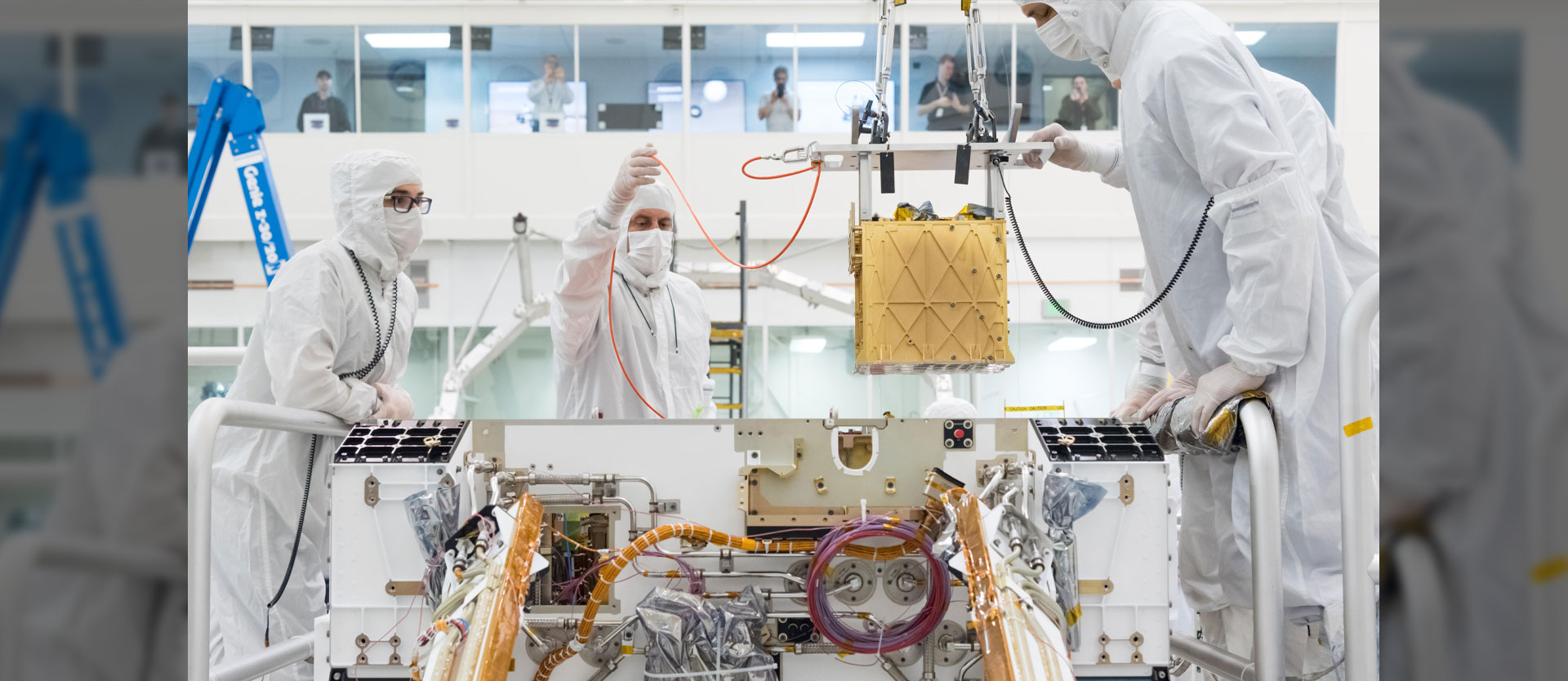
Generating oxygen on Mars

here may come a time when Mars does not seem as forbidding to us as it does now. Indeed, thanks to an instrument carried by NASA’s latest Mars rover “Perseverance” hopes that this will prove to be so have now received a boost. The reaction vessel concerned, which is about the size of a toaster and is familiarly known as MOXIE (“Mars Oxygen In-Situ Resource Utilization Experiment”), has enabled researchers at NASA to extract oxygen from the Red Planet’s thin, carbon-dioxide-rich atmosphere. This is a remarkable achievement. Never before have humans succeeded in remotely generating oxygen so far from home.
Carbon dioxide accounts for no less than 96% of the Martian atmosphere. MOXIE is capable of stripping oxygen atoms from molecules of the gas, converting it into carbon monoxide, which is returned to the atmosphere.
The process requires temperatures of around 800°C, which explains why MOXIE is made from heat-resistant materials. These include 3D-printed components made of a nickel alloy that serves to both heat and cool the gas during and after the reaction, and a light-weight aerogel which acts an insulator. The outer surface of the reactor is plated with a thin layer of gold, which reflects the infrared radiation generated during the heating step, and thus prevents it from propagating outward and possibly damaging parts of the rover itself.
MOXIE‘s first production run yielded about 5 grams of molecular oxygen, enough to supply the needs of an astronaut for about 10 minutes. MOXIE is designed to synthesize up to 10 grams of oxygen per hour. According to current plans, over the course of the Martian year (equivalent to nearly 2 Earth years), the device is scheduled to carry out nine more experiments of this type under a variety of conditions.
If all goes well after this promising start, MOXIE could turn a trope of science fiction into reality. The ultimate goal is to generate, collect and store large quantities of oxygen on Mars for use as a propellant for rockets that are powerful enough to enable teams of astronauts to lift off the surface of the planet. But of course, such facilities could also provide breathable air for astronauts on the surface.
“This is a critical first step at converting carbon dioxide into oxygen on Mars,” said Jim Reuter, principal investigator on the MOXIE project. “The results are full of promise, as we move toward our goal of one day seeing humans on Mars.”
Bringing astronauts back from any future mission to the surface of Mars will require approximately 7 tons metric tons of rocket fuel and 25 metric tons of oxygen. However, once a permanent base has been established, astronauts living on Mars would need far less of the gas – on the order of 1 metric ton per year, the team reckons.
Getting 25 tons of oxygen from here to Mars is a challenging logistical proposition. It would make much more sense to dispatch to the Red Plant a 1-ton converter capable of producing the same amount of the gas in situ. If and when that becomes possible, that facility will be a direct descendant of the pioneering MOXIE.












